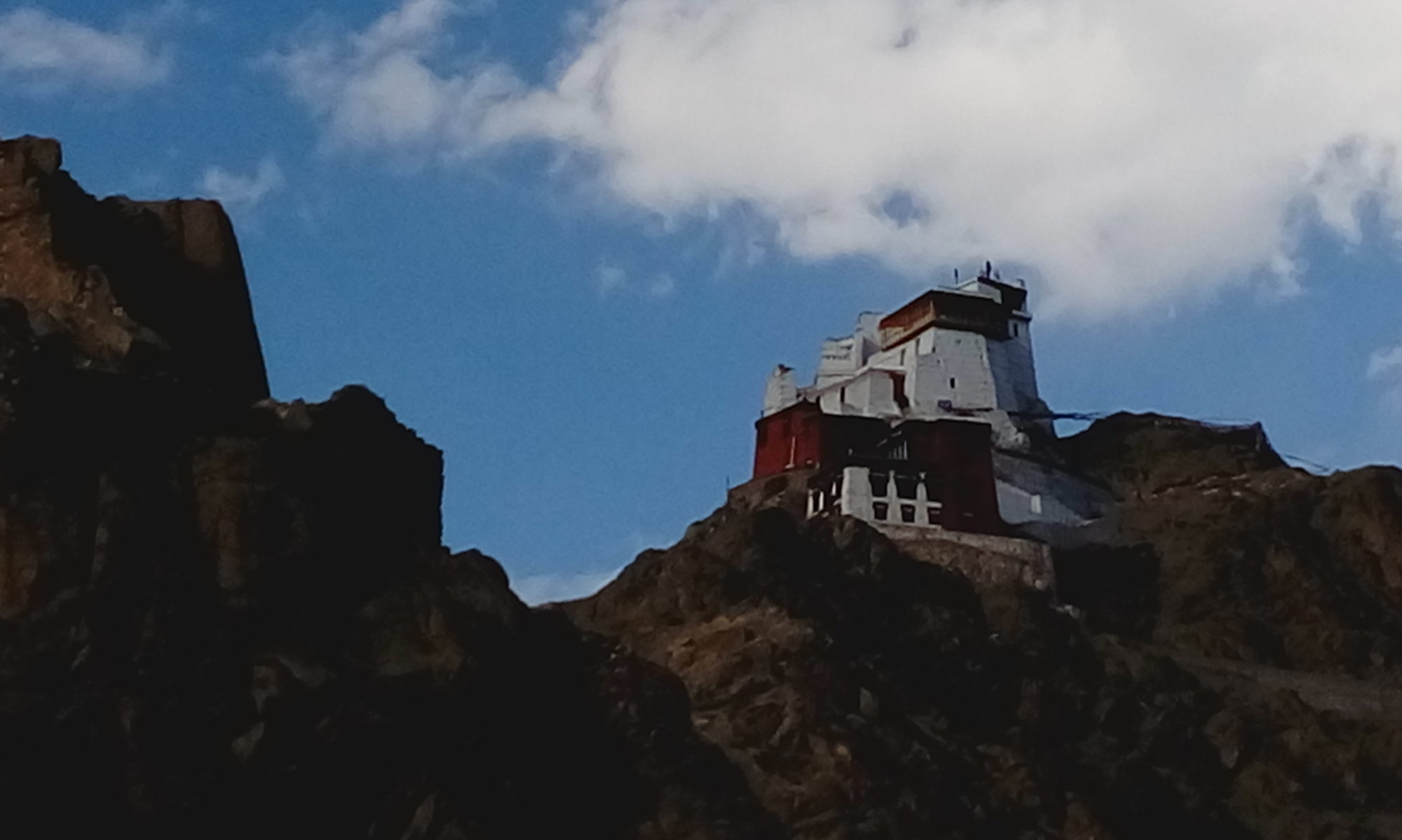‘So, when she gets married who will take care of you?” The question has been posed by the taxi driver during the long journey to Ubud from the Ngurah Rai airport. ‘She’ sitting next to me rolls her eyes. I laugh. It is not exactly the kind of cultural exchange I had envisaged, especially within hours of landing in Bali but the question sounds heartfelt, as if we have not thought life through and need to have more children! At some point the conversation veers to caste. He mentions his matter of factly, like the entire caste hierarchy is an academic exercise. Perhaps in Bali it is. Hinduism along with Buddhism came almost a thousand years back via Java to this island. But despite having its roots in India and certain affinities, Bali’s cultural identity has blossomed differently and distinctly.
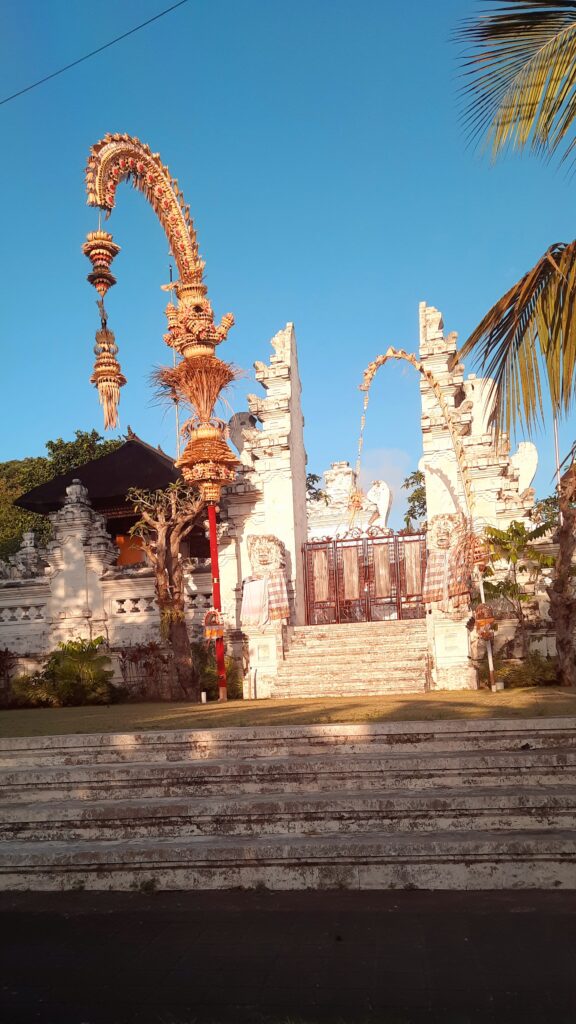
Bali, in a sense, is in a time warp. Shah Rukh Khan and Amitabh Bachchan are still the ruling cine gods. Temples outnumber people and are everywhere- inside and outside houses, each family has its own cluster in the village and then there are the temples of yore and of Instagram worshipers. But in this ‘Isle of the Gods’ where, unlike back in India, I want to visit the temples, (which the man ribs me about) one needs to choose or the trip would be just a temple run. Apart from homing on to cultural performances and local attractions we shortlist three temples and they do not include the most photographed ones!
Explore other temples in – Part Two – The Old Gold in Outstanding Orchha
Ubud- Eat, Pray, Love!
After a hearty breakfast of delicious banana and coconut pancakes and a platter of colourful fruits we make our way through streets lined with shops opening for the day to the Ubud Palace. Small leaf baskets with flowers dot the pavements, doorways and the thrones of pillared stone temples outside the houses in the morning. Offerings for a propitious day. The Palace is a small two courtyard affair with delicate, raised wooden pavilions and stunning brickwork. A part is still the residence of the royal family and we all cannot resist peeking into their private courtyard dotted with the most beautiful vases.
Read also – Bikaner’s Chattris: Royals in Repose
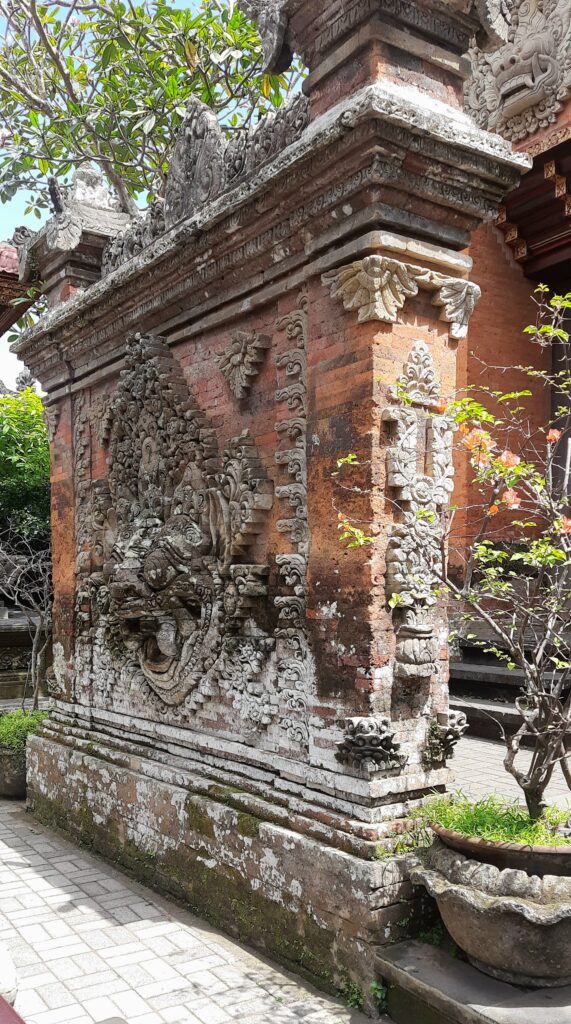
The nearby Saraswati temple’s entrance is squeezed between an eatery and Starbucks. We get a full rig of mandatory purple and white headgear, shirt and sarong to wear.
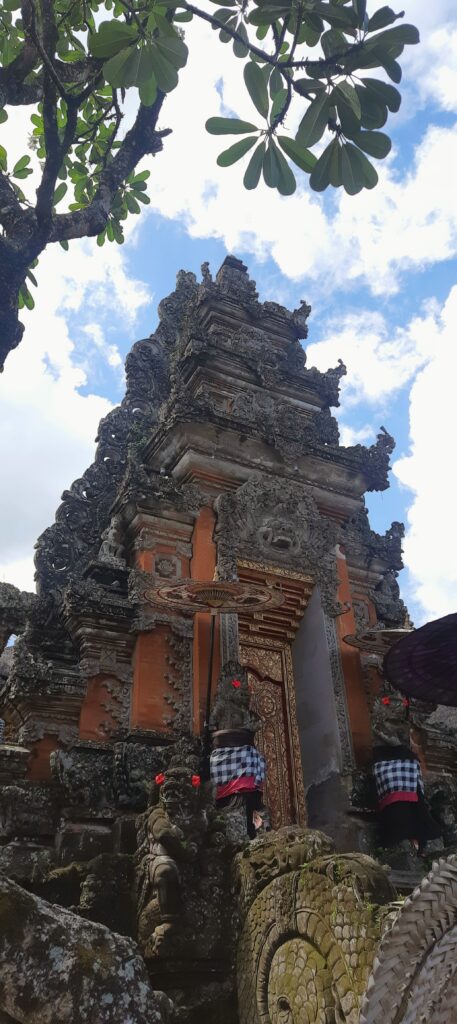
A path lined with lotus ponds leads to ornate chairs placed before a resolutely shut doorway which is guarded by moss covered fierce creatures adorned with fresh red hibiscus. Inner sanctums are not open to any outsider in any of the temples we discover.
After a sumptuous lunch at Sun Sun warung where the setting and food are a visual delight, we amble through a labyrinth of narrow streets lined with traditional houses hidden behind orange walls, inviting arched doorways and courtyards with frangipani trees in bloom. A half ajar door in one reveals a massive impassive blue Ganesha.
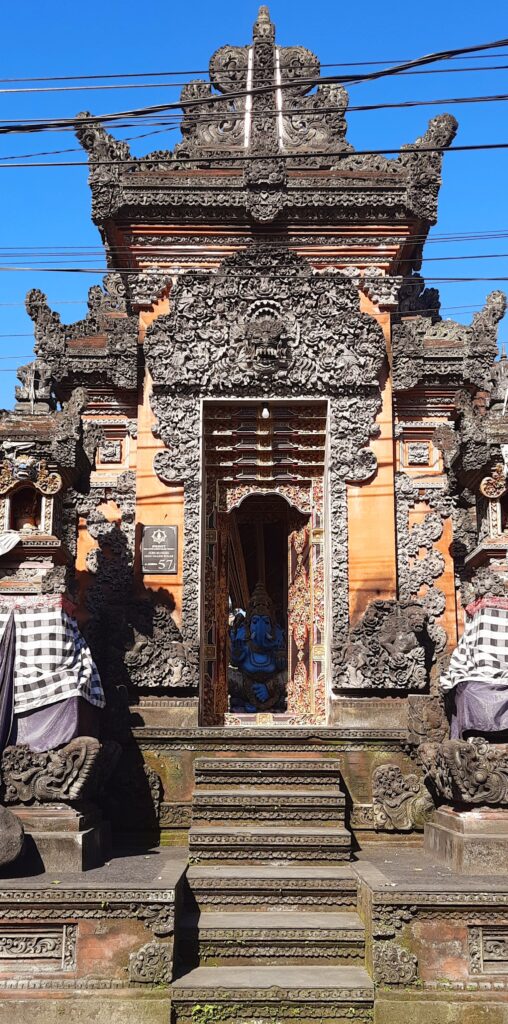
Intricate Penjors swaying in the breeze next to the doors announce the ten-day Galgulan festival, to celebrate the triumph of good over evil. We cross a workshop where an artist skilfully chisels away at an elaborately carved doorway that would be a connoisseur’s pride.
Discover doorways in- Part Two- What Not to Miss on a Weekend Vacation in Shekhawati
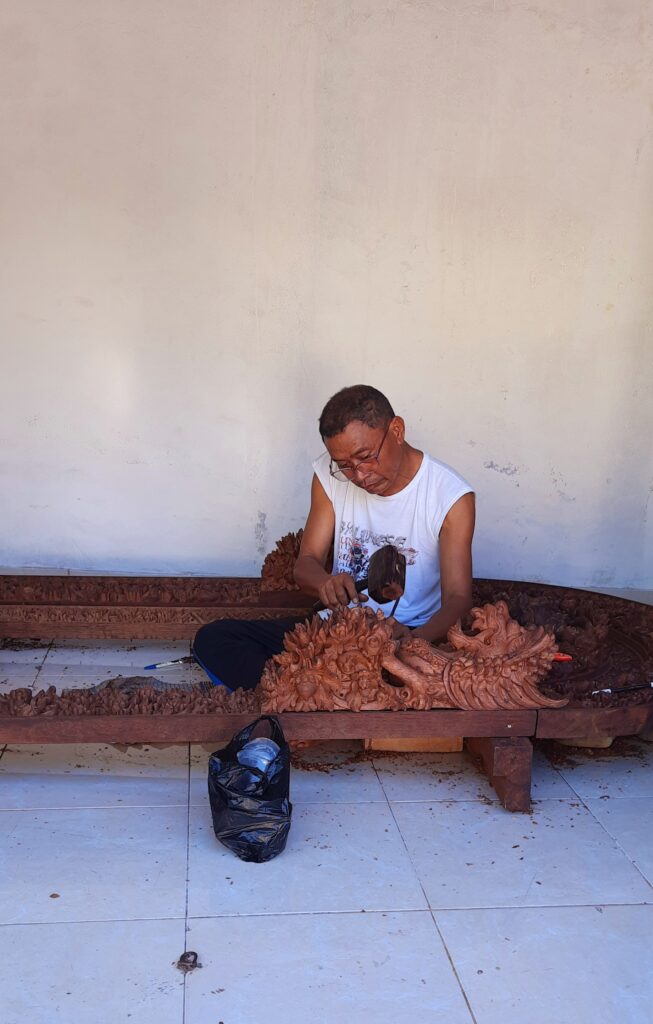
In the evening after browsing through the Ubud Art Market we head to the Palace for the dance performance in, what we think is, good time. The courtyard is full and we barely manage chairs on a platform at the rear. Against the backdrop of a lit doorway, the show begins with the tinning instruments of the Gamelan orchestra and the Legong dancers keep us spell bound with their expressive eyes, elegant fingers and delicate movements.
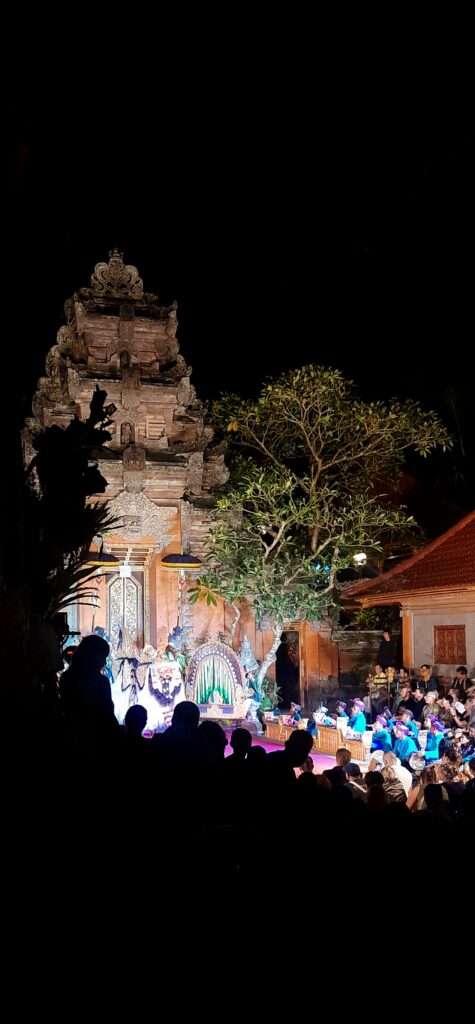
The second performance is a Barong dance drama with a benign beast and fierce looking but equally evocative performers. Outside, on the road little troupes of boys in black who have been busy all day, can be heard from afar as they make their way through the streets with their instruments and energetic Barong, stopping to perform every now and then. The air is full of music and merriment.
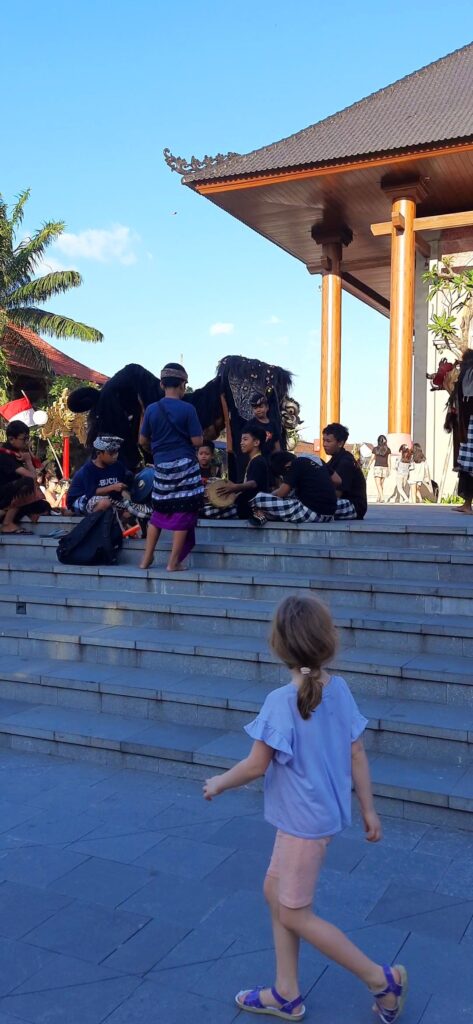
Luwak Kopi for the Road
The next day we zip past a line of workshops on the outskirts of Ubud producing the most stunning artefacts from cane and wood. (If I had known about them my trip for the day would have ended there itself!) At an ‘Agro farm’ we are given a tour with an introduction to a variety of teas and coffees, including Bali’s (in)famous Kopi Luwak and its traditional process. The process instead of foraging, now involves feeding caged Palm Civet cats coffee beans, which once pooped are cleaned, roasted and ground. (Not everyone’s cuppa!) So, the ethics of the production are questionable.
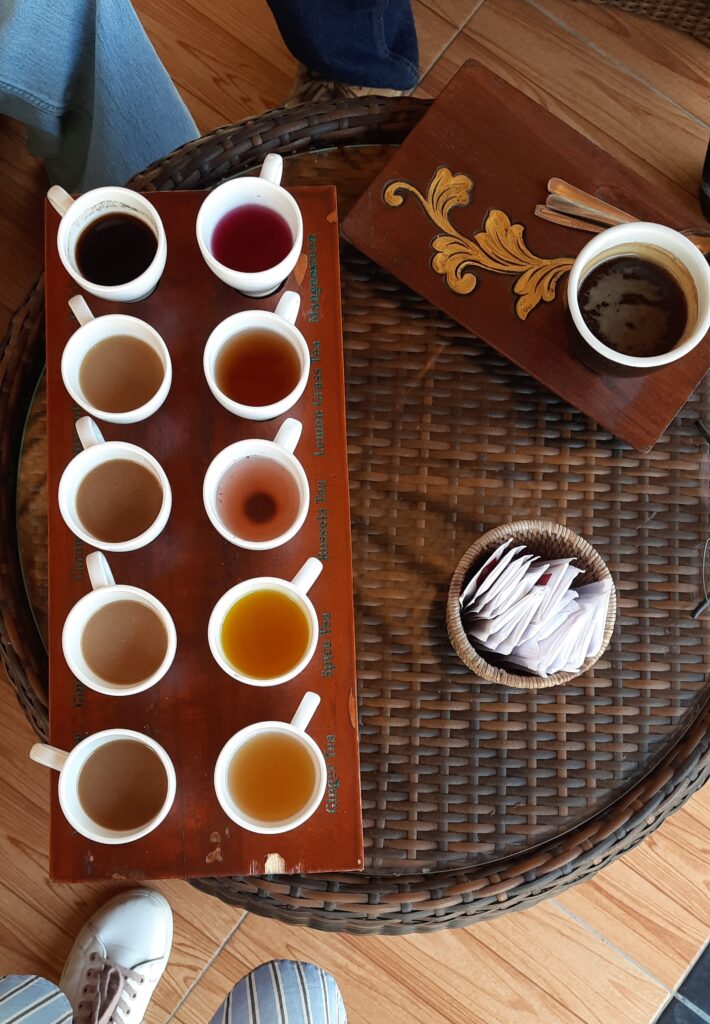
The world’s most expensive coffee served in style tastes robust with a lingering sweet aftertaste. The place overlooks some rice fields and has a couple of the ‘Bali Swings’. I spy a flying red dress accompanied by, I cannot decipher, screams of delight or ‘what all I have to endure for that Insta high!” The much-photographed Tegalalang rice fields, not on the original itinerary, are the next stop since they are enroute to the temples but we don’t linger. The fields are dry and the crop is sparse. Perhaps in another season they would be more appealing.
Savour- Nasirabad’s Kachora: More than a Savoury Story
Pura Pilgrims
Winding through quaint village roads lined with towering penjors and flooded terraced fields reflecting a majestic Mt Agung we reach Pura Tirtha Empul, the sacred water temple, made in 926 AD. A stone throne with a deity (the only one I saw in Bali) stands under a sprawling tree with branches holding massive ferns. A complex of ponds and temples lies beyond.
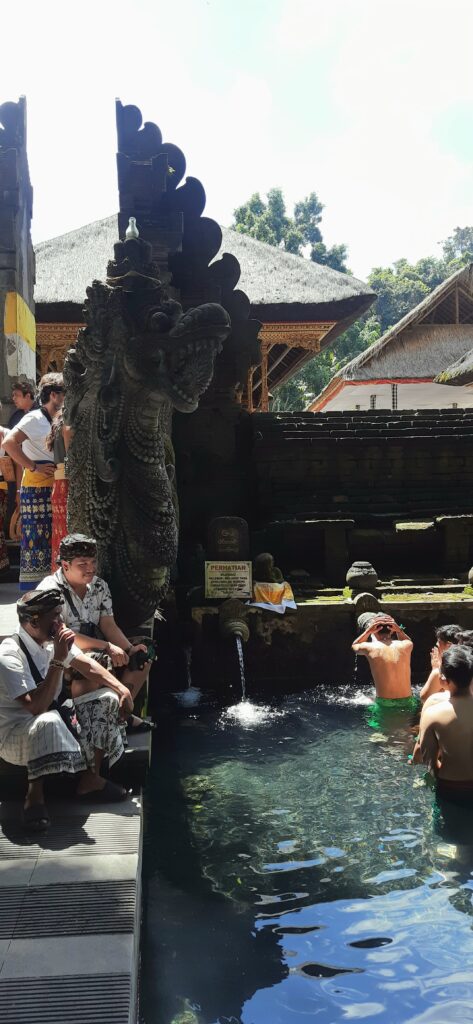
It is a green sarong here and the first pond is crowded with people waiting in line to take a purifying dip under the spouts bringing water from the inner pond where grey ash mushrooms from springs and mixes with water filled with reeds. Thoughtful statues pour water into the last Koi Pond full of overfed golden fish.
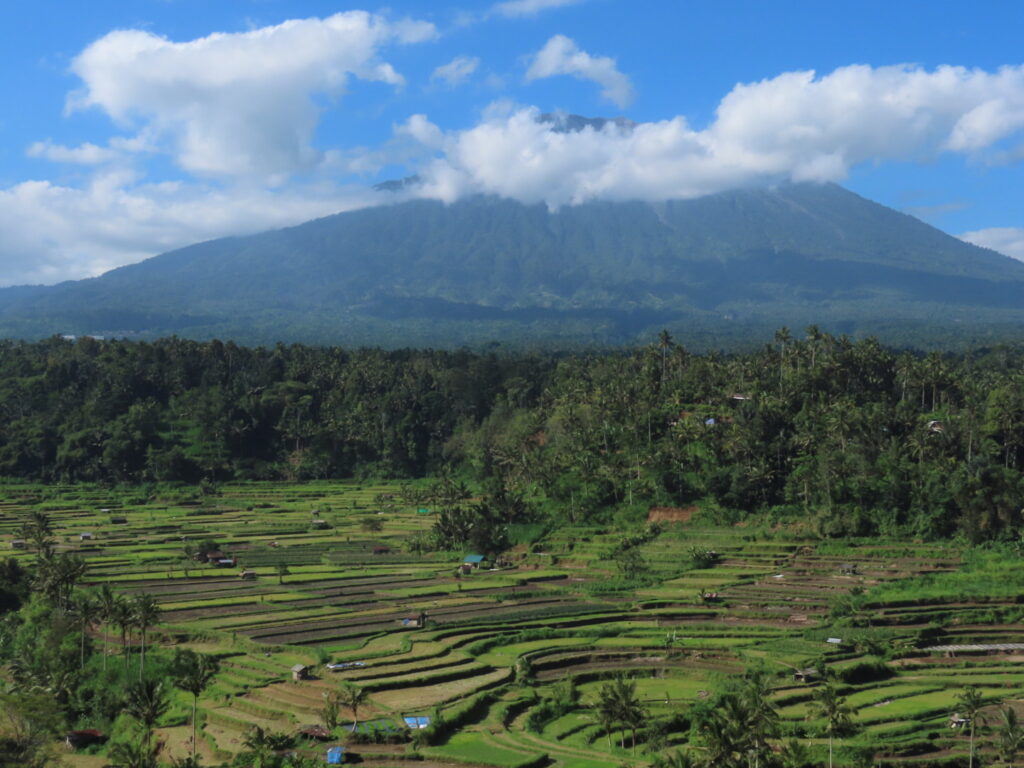
Lunch is at a restaurant on the edge of a ridge where the main course is the view. It overlooks a bowl of rice fields, ringed by forests coming down the slopes of a Mt Agung hiding behind the clouds. Then we head to Pura Agung Besakih on the slopes of the volcano. The ‘Mother temple’ complex dates back almost a thousand year. The temples rising in steps are dedicated to the Hindu Trinity. One towering stone structure sitting back in a line of thatched pagoda style roofs in odd numbers alludes to the shikharas of South Indian temples.
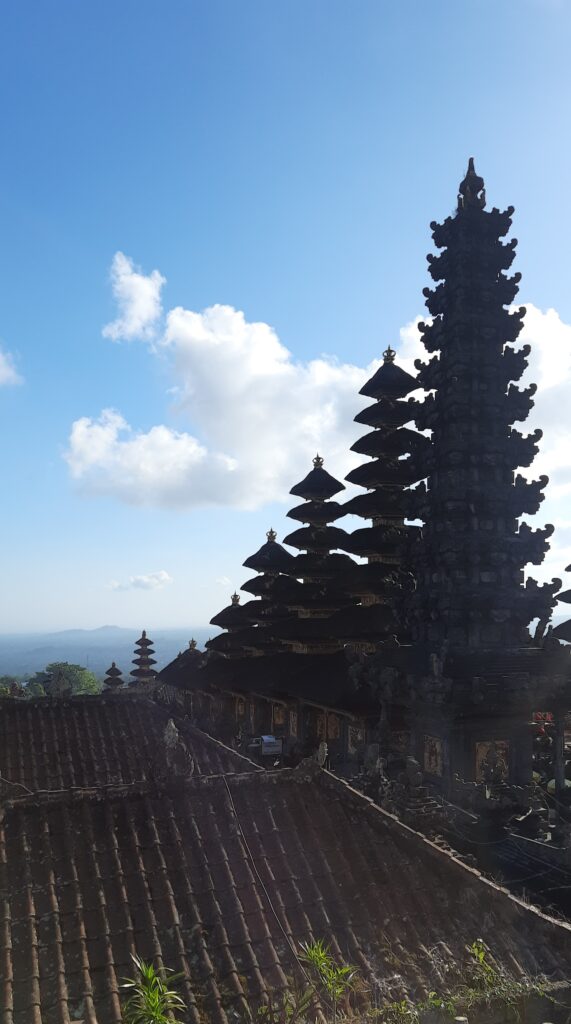
The main complex, Pura Penataran Agung, is dedicated to Shiva. The temples of the other gods and minor shrines dot the slopes and ridges around. Our guide, a chatty fellow who quotes scriptures being the son of a senior priest of a nearby village, lets us into the gate of the main courtyard. Three urns representing a god each of the Trinity sit on a wall under small umbrellas. A priest in white sits in a wooden platform conducting a ceremony for a family while a child runs around oblivious to the solemnity of the occasion.
Discover- Mystic Maheshwar : At the Center of the Universe
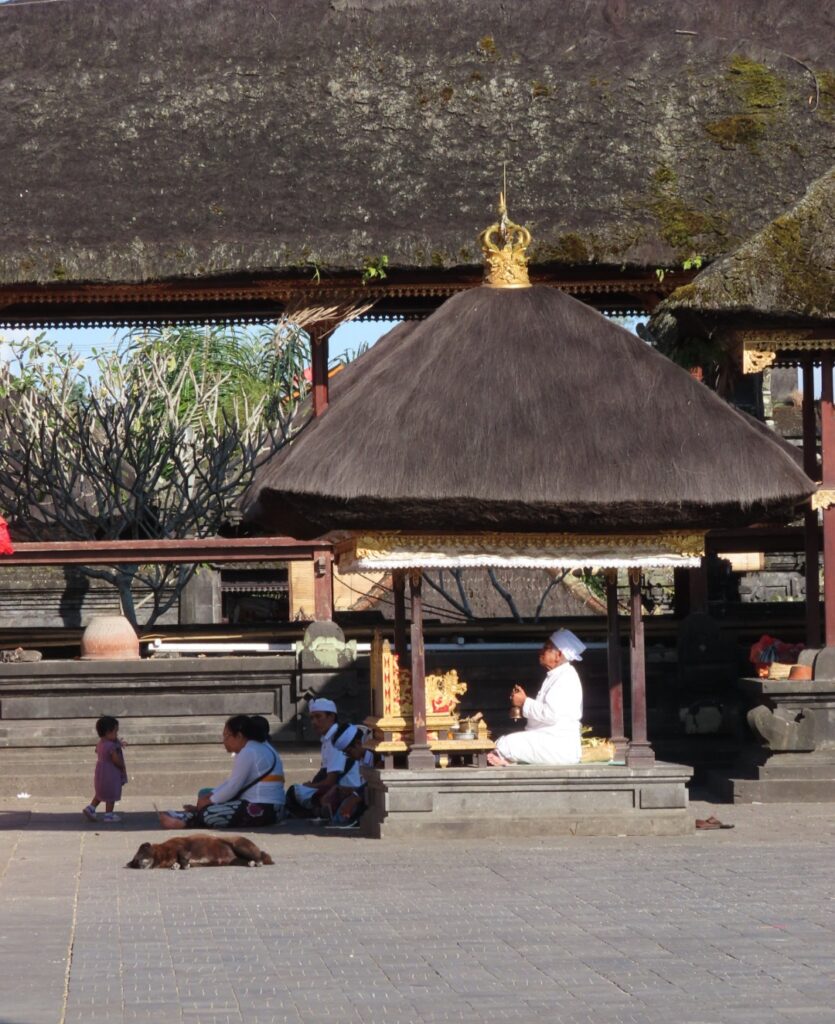
This is as far as we can go… and somehow it is enough. As we return to the towering Balinese style gate at the entrance, the clouds finally part to reveal the picture perfect peak of Mt Agung.
Uluwatu’s Ultimate Show-
Our last evening in Bali and we hurry to Uluwatu temple where it is just an orange sash that we are given to wear. The sprawling green complex has a small shrine on the edge of a cliff with a stone wall running along the precipice lined with profusely flowering bougainvillea and people!
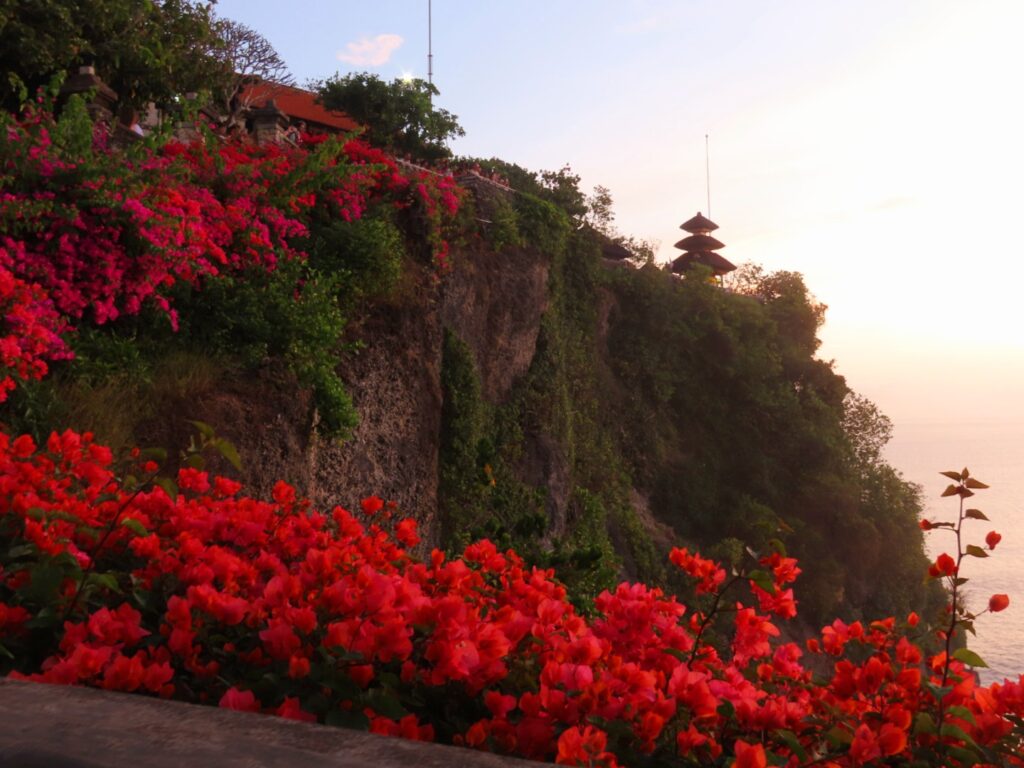
All here to catch the sunset as much as the Kecak dance. The fiery sun setting over dulcet waves that break violently at the base of the cliffs is as much a show as the ‘Fire Dance’. The Ramayana inspired dance drama starts with the chorus of ‘Kecak’ by a group of men who keep it up, with hand movements, throughout the performance. Who says it is easy being part of the background!
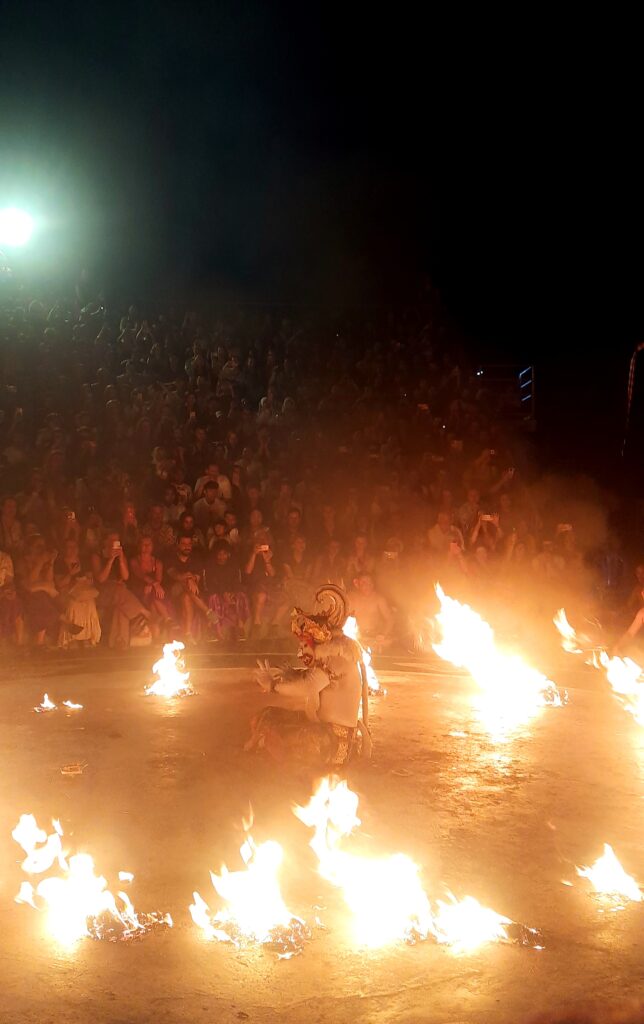
The star, and he is a rockstar in it!… jumping, mingling, posing for selfies, taking out imaginary lice, all the while without missing a beat in his part of the story, including setting the stage on fire, is Hanuman. It is a glorious goodbye from this Isle of the Gods.
Find gods in- An Ode to Ancient Life in Stone- The UNESCO World Heritage Site of Ajanta and Ellora
Fact File-
Temples– All have tickets starting from Rs 320. The cost includes the mandatory sarong and at Besakih, a guide and one way travelling by an electric cart.
Ubud Palace-There are different dance performances every evening and the tickets cost Rs 650 approx.
Uluwatu-The Kecak show tickets can be purchased online. The 6 pm show gets sold out fast.
Luwak Kopi Tasting– The tour is free and the Luwak tasting costs Rs500.
Tegalalang Rice Fields– Entry ticket is Rs 160 appox.
